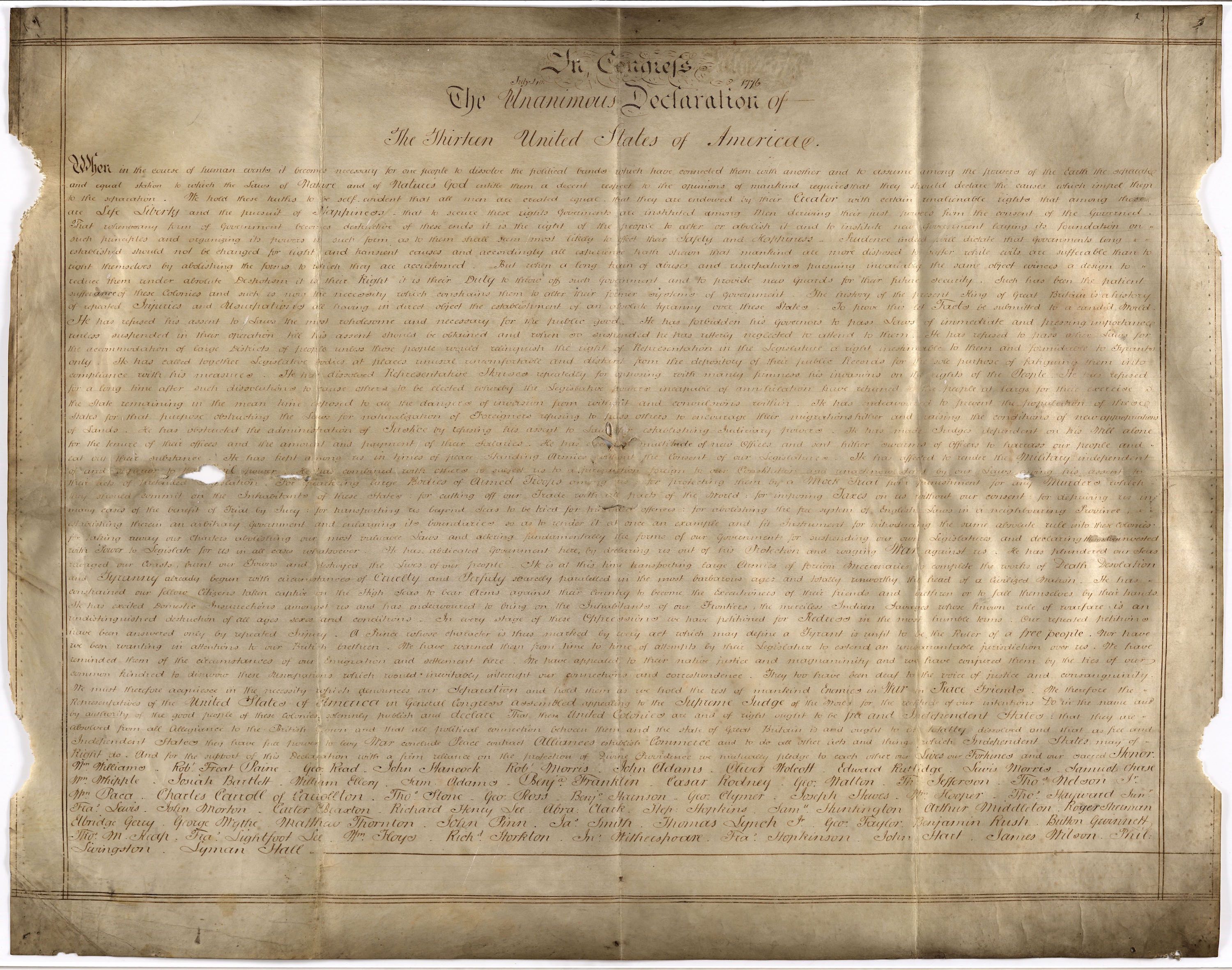Found: A Unique, Handwritten Copy of the Declaration of Independence
It contained a puzzle of sorts.

Before Danielle Allen and Emily Sneff found a copy of the Declaration of Independence in an obscure British archive, the only known 18th century, handwritten copy of the U.S.’s founding document was the one housed in the National Archives in Washington, D.C.
In August 2015, though, the two Harvard researchers uncovered a copy of the Declaration created in the 1780s, in connection with the Constitutional Convention. They found it in the West Sussex Records Office, in Chichester, England.
Besides being an extremely rare copy of the Declaration, this document has an intriguing feature: the signatures of the men who put their name to the Declaration have been reordered.
In 2014, Allen, a professor at Harvard and a political theorist, published Our Declaration: A Reading of the Declaration of Independence in Defense of Equality, and as part of her research, created the Declaration Resources Project, which collected different versions of the Declaration, as they were published in 18th century newspapers or as ornamental engravings, as The New York Times reports. Sneff, the project’s manager, came across an entry in a database of British archives for a parchment copy of the document and decided to investigate further. The two researchers went to Chichester to see the document in person and determined it was the real deal.
This copy of the Declaration, they believe, was commissioned by James Wilson, who both signed the Declaration and was a delegate to the 1787 Constitutional Convention. He was a strong advocate for nationalism and argued that the country needed a stronger federal government to cement the union of states.
At the bottom of the 1776 copy of the Declaration, the 56 signers are grouped by the states they represented. But in this copy, the signatures are intermingled in no obvious order. The researchers, though, believe that the names were jumbled “with help from a well-known 18th-century cipher,” the Times reports. Wilson, they think, wanted to send a message about the need for national unity.











Follow us on Twitter to get the latest on the world's hidden wonders.
Like us on Facebook to get the latest on the world's hidden wonders.
Follow us on Twitter Like us on Facebook